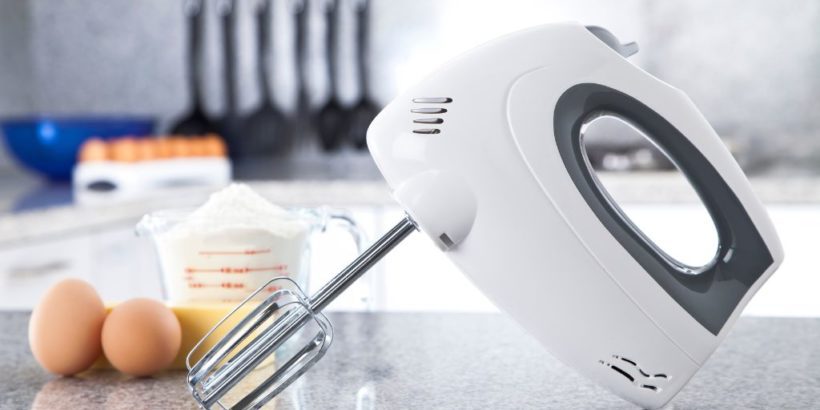Bringing a blender or mixer on a plane is not the most common thing you see every day.
However, sometimes people need to bring their blenders/mixers to stay healthy on the road, serve up different dishes, or perhaps deliver gifts to others.
But are blenders going to be allowed through airport security? And if you bring them in your checked baggage, is there anything you need to know?
Below, we will take a look at TSA’s rules for taking your blenders and mixers through airport security and breakdown everything you need to know.
Table of Contents
Can you bring a blender or mixer on a plane?
You can bring blenders in your carry-on if they do not contain blades but you can bring blenders with blades in your checked baggage.
Hand mixers and KitchenAid’s are generally allowed in your carry-on and checked baggage although some sharp attachments may not be allowed in your carry-on.
Keep reading below for more details on how specific types of blenders are treated by TSA.
Tip: Use the free app WalletFlo to help you travel the world for free by finding the best travel credit cards and promotions!
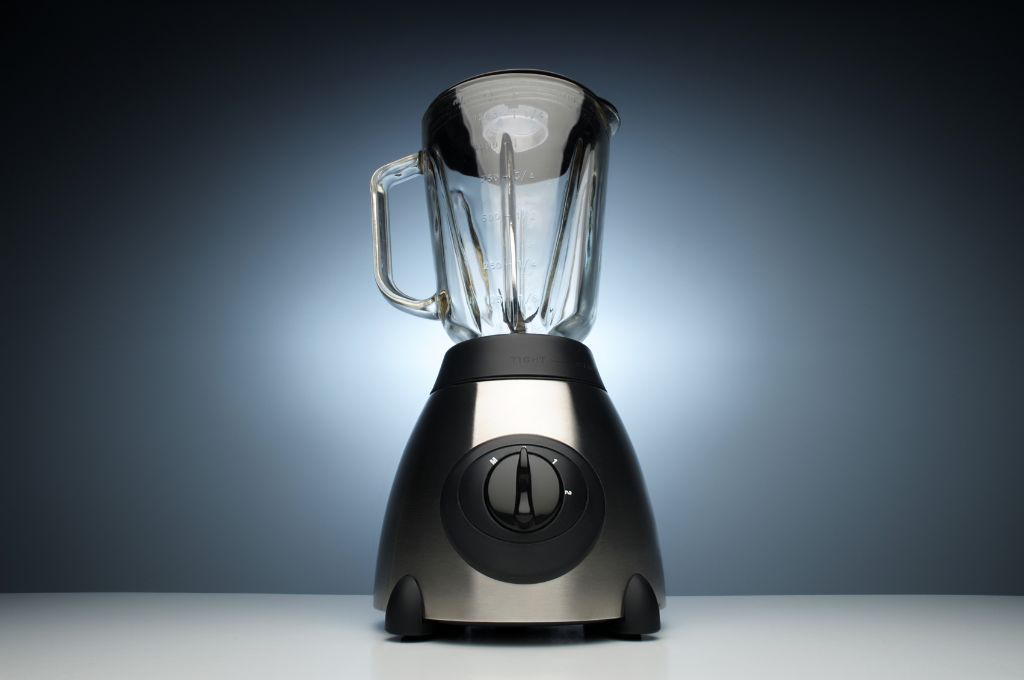
The problems with blenders
TSA allows all sorts of electronics through airport security so certain components of blenders like the motors don’t necessarily present any kind of threat.
But blenders with all of their parts and pieces intact can be problematic.
The biggest issue with blenders is that they usually contain blades. These sharp, stainless steel blades can cut through just about anything so it’s no wonder that they could be considered a threat on a plane.
If your blender contains blades the only way you can bring it through as a carry-on is if the blades are removed. Otherwise, it will always have to go in your checked baggage.
Pack blades securely in your checked baggage
When you do pack blenders in your checked baggage make sure that you take certain precautions.
First, you want to make sure that you wrap up the blades or have them secured. This is because sometimes your bag could be inspected by a TSA agent.
Blenders sometimes come in funky shapes so it would not surprise me if they ever set off the trigger for a checked baggage inspection.
If you had your blades loosely packed in your bag, a TSA agent could easily get cut up pretty bad so take precautions like wrapping the blades in newspaper or layers of cloth.
Whether you have a glass or plastic container, you also need to think about protecting your blender container so that it doesn’t get crushed, cracked or chipped.
The safest route would be to bring the container with you as a carry-on so that you can protect it yourself. For example, you could keep it on your person or place it safely under the seat in front of you between your feet (if it can fit).
Plastic containers will be able to take more abuse in your checked baggage but they can still get broken with enough force. If you plan on bringing a glass blender container, read our tips on traveling with glass to find out how to take adequate steps to protect it from breaking.
Be prepared for extra screening
If you are bringing your blender through airport security as a carry-on and you have removed the blades, it’s still possible that a TSA agent will want to take a closer look at your blender.
Again, some blenders just look odd and have weird looking components or attachments.
TSA agents are known to take a close look at anything unfamiliar so be prepared to spend a few extra minutes in security if you bring your blender through.
Related: Can You Bring Food on a Plane?

Different types of blenders and the TSA policy for each type
Blenders come in a lot of different forms and so below, I’ve broken down each type of blender you might think about bringing and what TSA has to say about them.
Hand Mixer
Handmixers are used for beating ingredients such as eggs and you can find electric versions of these which give your forearms a much-needed rest.
Bakers rejoice because these are allowed through TSA in your carry-on or checked bag because they do not contain any blades.
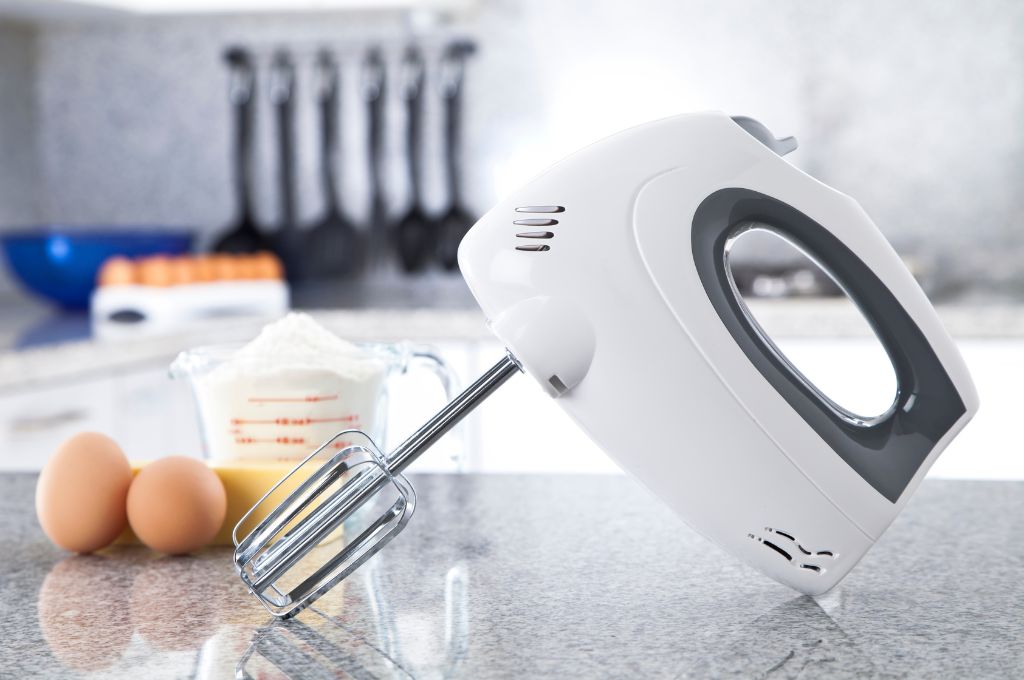
Immersion Blender (or Stick Blender)
These are handheld blenders that are often used to blend up soups and other hot liquids. Others may even use them for protein powder shakes or creating tasty treats like pudding.
TSA does not allow you to bring immersion blenders in your carry-on if they have the blade but they will be allowed in your checked baggage even if they have the blade.
If you have a mixer attachment those should be allowed.
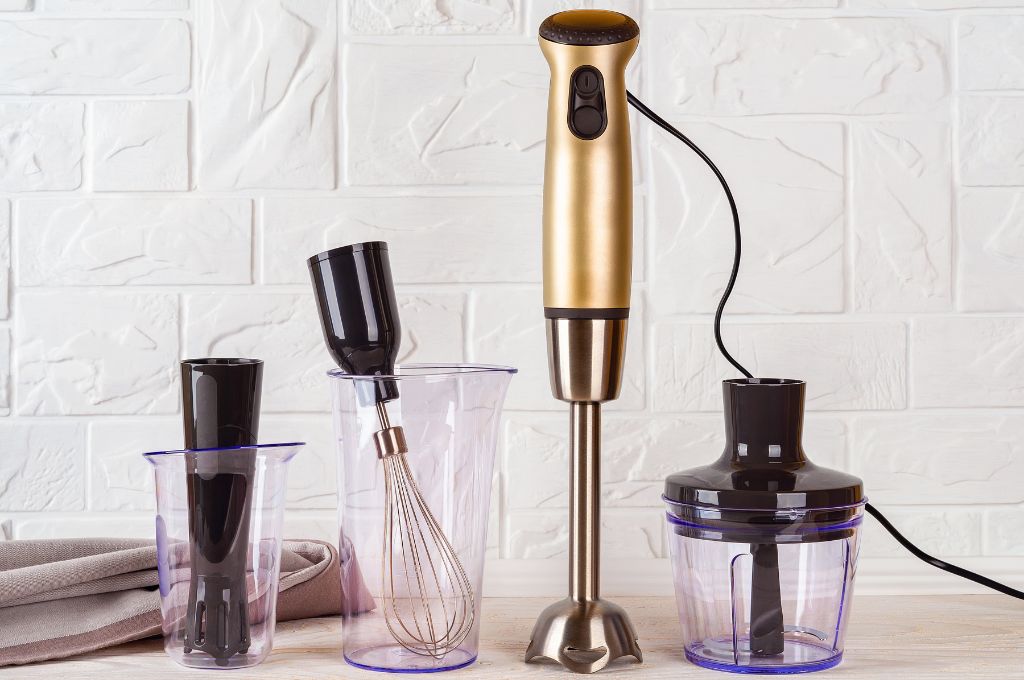
Single-Serve Blender
Sometimes called bullet blenders, single-serve blenders come from popular brands like NutriBullet, Ninja, and Magic Bullet.
They work great for making smoothies and chopping up ice. Plus, you can drink your smoothie straight out of the container if you want to.
TSA will not allow these to go through as a carry-on if they contain the blade but you can bring these through in your checked luggage with the blade.
Remember that if you made a smoothie, you can only bring liquid containers that hold no more than 3.4 fluid ounces so you would not be able to bring a container filled up with any amount of smoothie.
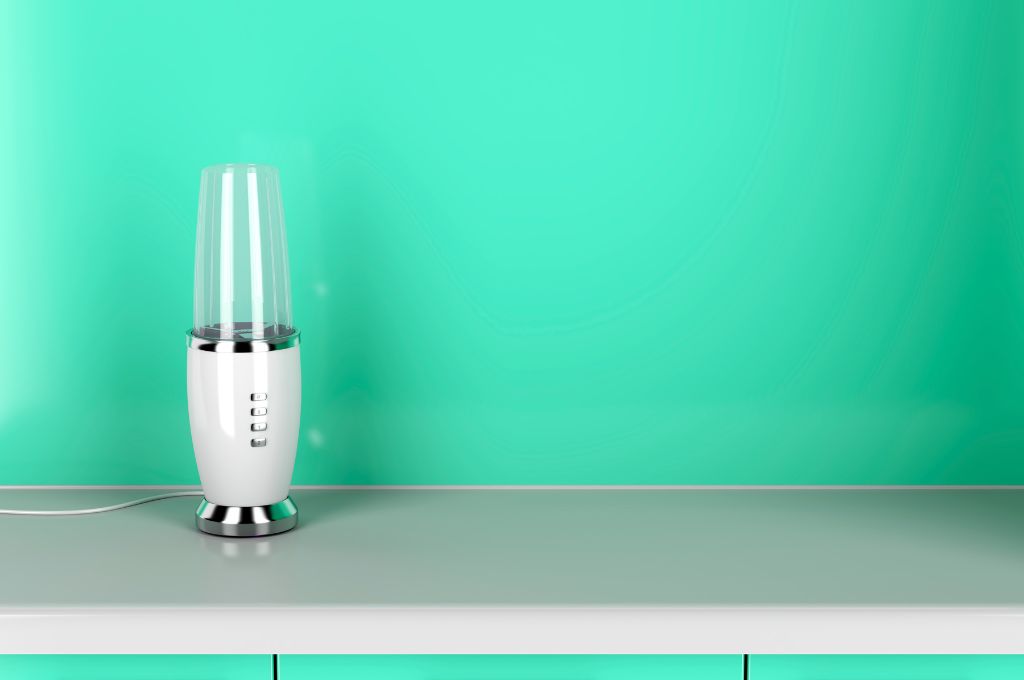
Portable blender
Portable blenders are similar to the personal blenders above in that they are compact and can serve up a single smoothie.
The big difference is that these are made up of a single tube, often glass that screws into the blade base and lid. BlendJet is a good example of one of these.
The extreme portability makes them great for making smoothies in your car, after a workout at the gym, or even bringing them to your workplace. They also would be perfect for travel.
TSA will not allow these to go through as a carry-on if they contain the blade but you can bring these through in your checked luggage with the blade. The blade may not be detachable for some of these so they may have to always go in your checked baggage.
Bladeless blenders
Bladeless blenders are a new invention and allow you to blend things up without having to use a blade. For example, they could use an Aer Disc, which is a disc perforated with 12 holes designed to aerate and agitate ingredients.
People will use them for delicate blends like shaking cocktails (mojitos) but they can also be used to whisk (aquafaba, meringue, or fresh whipped cream) or emulsify (hollandaise sauce, mayonnaise, or aioli).
This one is a little bit of a tricky one because by their very name, these are “bladeless” blenders and so they should be allowed in your carry-on.
The problem is many TSA agents may not be familiar with these and the circular disk could still trigger them to take a second look.
Personally, I would probably travel with these in my checked luggage to avoid any issues but if you did run into trouble at the security checkpoint, you could pull up the product online and show them that it is literally a “bladeless” blender and so it should be allowed.
Also, you could mention that cheese graters are allowed and those, while somewhat similar in structure, would be able to inflict more damage than one of these.
Countertop blender
Countertop blenders are some of the most common types of blenders and are made by big brands like Vitamix and Kitchenaid. These are often used for drinks and smoothies.
Countertop blenders are pretty big and may have a 2L capacity so traveling with these along with their big base is not always the easiest.
That said, if you remove the blades you can take them in your carry-on and they will also be allowed in your checked baggage even with the blades. Your typical countertop blender should fit within the carry-on size dimensions for most airlines.
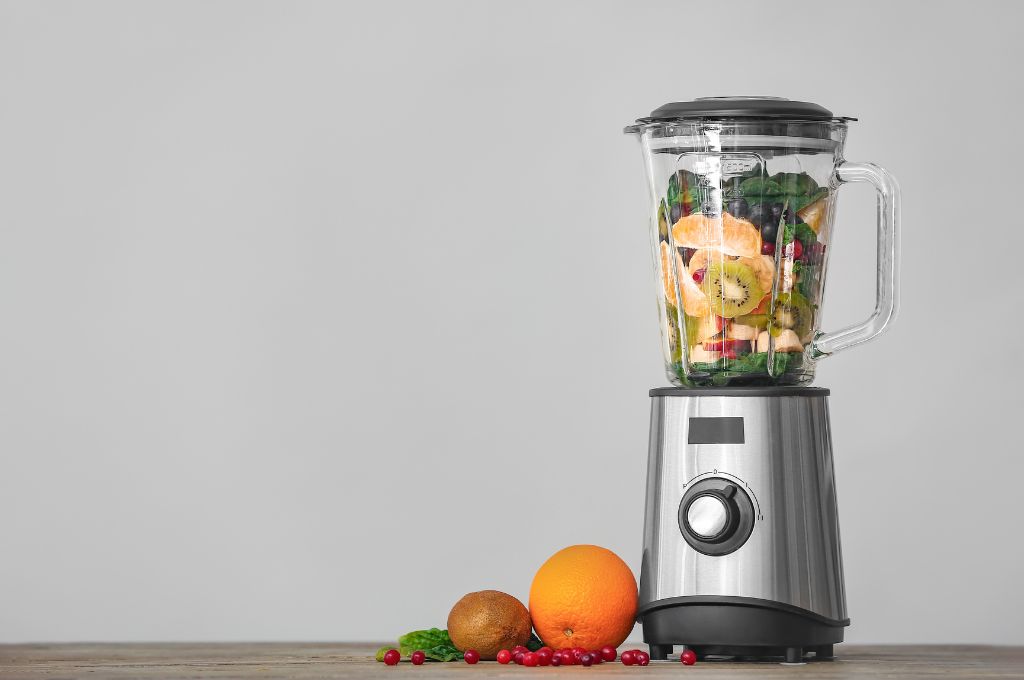
Commercial blender
Commercial blenders are those large blenders with high power that are often used by restaurants and cafés. However, some people who do frequent blending use them in the kitchen.
Popular commercial blenders would be blenders like the Vitamix 5200 and Cleanblend Blenders.
The same rules for countertop blenders would apply to commercial blenders. Basically, you could take these in your checked baggage and in your carry-on if you remove the blades.
Because these have an even bigger motor and larger build than countertop blenders, these may be even more difficult to travel with. However, they can probably still fit as a carry-on with some airlines.
For example the Vitamix 5200 has dimensions of 20.5 x 8.75 x 7.25 in. United Airlines has carry-on dimensions of 9 inches x 14 inches x 22 inches, so even these large blenders would fit within those dimensions.
Stand mixer
Stand mixers are super popular for baking and for that reason they are also called cake mixers. These can come with a lot of different types of attachments including mixers, dough hooks, pasta press, food grinder, grain mill and many others.
Popular brands include: KitchenAid, Cuisinart, Hamilton Beach, and Kenwood.
The stand mixer itself can come through as a carry-on or in your checked baggage. If you bring a stand mixer as your carry-on, you need to be mindful about the carry-on size restrictions.
These can be quite bulky so it’s best to verify that they fit within the size specifications.
For example, the Pro Line® Series 7 Quart Bowl-Lift Stand Mixer has a height of 16 2/5 inches, depth of 14 3/5 inches, and a width of 13 3/10 inches but it weighs 32 pounds.
That’s pretty close to the weight limit some airlines publish for carry-ons so be mindful of that.
The attachments should not be a problem in your checked baggage but some of them could be problematic when bringing them through as a carry-on. For example, if you had a dough hook and it was pointed, TSA will not allow that.
Other attachments may just get you strange looks or enhanced security inspections so be prepared to wait extra time.
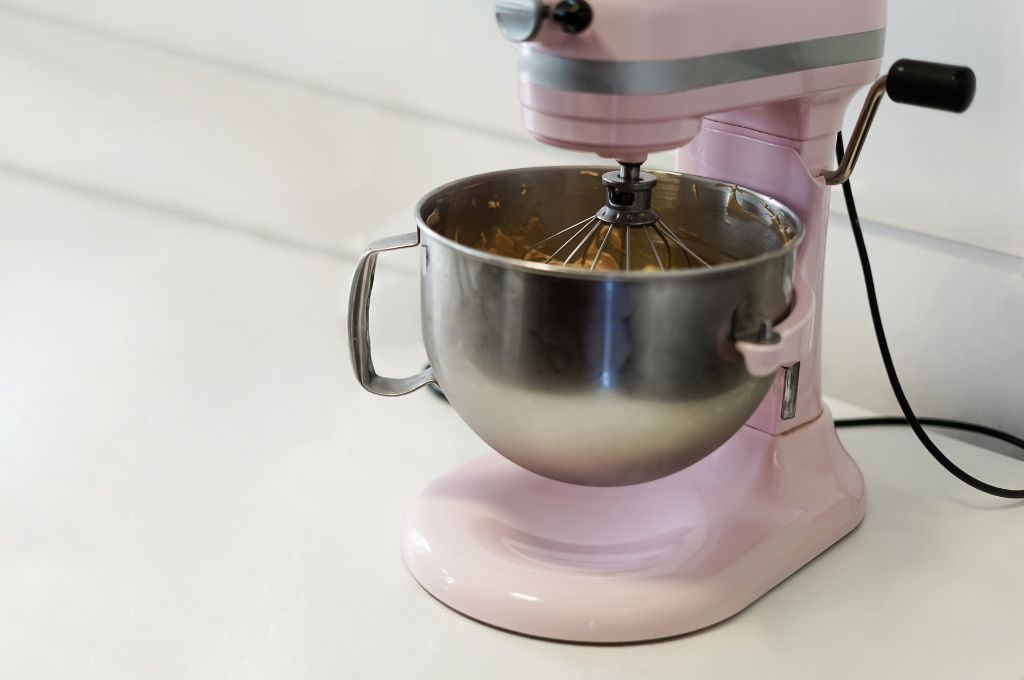
Final word
When it comes to traveling with blenders, it really just comes down to avoiding traveling with sharp objects.
As long as you have the blades removed, you can bring your blender through as a carry-on and while some are pretty large, for the most part they still should comply with carry-on size requirements for airlines.
Blenders with blades can always go in your checked baggage but you just need to be mindful about how you pack so that you don’t risk exposing a TSA agent to a sharp blade.
And finally, we’re going through airport security don’t be surprised if you get questioned about your blender especially if it looks peculiar or is a new product TSA has not seen before.
Daniel Gillaspia is the Founder of UponArriving.com and the credit card app, WalletFlo. He is a former attorney turned travel expert covering destinations along with TSA, airline, and hotel policies. Since 2014, his content has been featured in publications such as National Geographic, Smithsonian Magazine, and CNBC. Read my bio.

